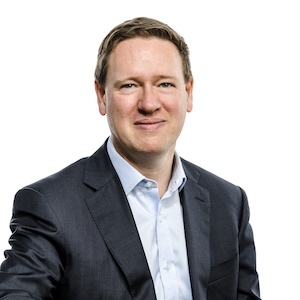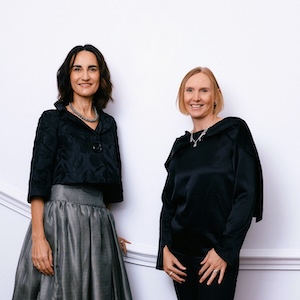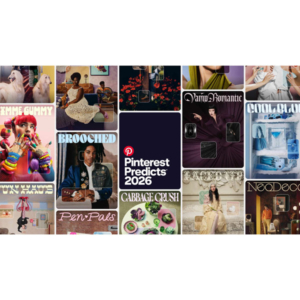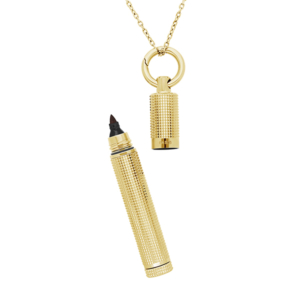
Al Cook, who has been CEO of De Beers since February, spoke to me on June 1 during the JCK show in Las Vegas. Here, the affable 48-year-old—who has become a frequent poster on LinkedIn—talks about Botswana, possible sanctions against Russia, Forevermark, and, of course, lab-grown diamonds.
You have been in the job about 100 days. What are your early impressions of De Beers?
I’m a geologist originally. So my excitement around diamonds historically has been around how they’re formed in the Earth’s mantle and how, in this incredibly unlikely way, they appear in a few places around the world. That was the majority of my knowledge.
What’s been incredible over the last 100 days is learning what happens to a diamond above the ground, as it makes its way on this incredible journey from a producer country to places like Las Vegas, where it appears on someone’s ring finger. That’s been extraordinary.
I come from the energy sector. For me there’s a lot to learn, but there’s a few things in common. Everything we do is around the long term in both industries. At the moment, with the current market sentiment, that long-term perspective is really important. Everything we do is around partnerships. At De Beers, we simply couldn’t exist without our partners, whether they’re producers, sightholders, or customers. There’s a huge focus on technology, and innovation, and staying at the forefront of that before it overtakes you.
There’s a lot of things that are new. I didn’t used to come to conferences in Las Vegas.
Can you update us on your negotiations with Botswana?
We obviously can’t comment on what’s happening in the negotiations, but there’s really a couple of important principles. We have a longstanding partnership—54 years—[with Botswana], and I have tremendous respect for what the Botswana government is asking for in terms of us evolving that partnership and [arriving at] agreements that need to stand the test of time for the next few decades. So I’m confident we’ll reach an agreement, but it’s an agreement we need to live up to. There will be no win for De Beers without a win for Botswana.
De Beers’ contract with Botswana expires at the end of the month. Do you foresee more extensions, or will this work like the debt ceiling, where you’re facing an absolute deadline?
I’m hopeful we’ll reach an agreement by the end of June.
The president of Namibia has praised some of the demands that Botswana’s President Masisi has made. Do you see kind of a spillover effect as far as your other agreements?
Wherever we operate—whether it’s Canada, whether it’s Namibia, whether it’s South Africa, whether it’s Botswana, whether it’s Angola—we will need to meet evolving needs from our producer countries, and we need to anticipate those and put in place agreements that don’t just look good in 2023. They will look good 10 years from now in 2033.
There’s been a lot of speculation about the future of Forevermark. What are your thoughts?
What I’ve seen for myself is the value that Forevermark has created over the last 15 years. The mantra I have in this job is “evolution, not revolution.” I’m building on what’s been good in the past.
We absolutely need to evolve Forevermark to match our customers’ needs, and we will do that. But everything we do starts with the recognition that our customers have invested a lot of time and effort and money into Forevermark. We’ve invested a lot of time and effort and money into Forevermark. Together, we’ve created an incredibly valuable brand that I’ve experienced myself in shops at Gaborone airport, at sights in India, in department stores in New York.
Do you see it continuing in its current state as a wholesale brand sold in the United States?
I think it’ll remain very relevant in the United States. I’m into this job 100 days; I sincerely hope that after 1,000 days I’ll be able to answer retail questions with the same panache as [chief brand officer] David [Prager].
[Note: Prager attended the interview.]
It feels that in the United States, Forevermark is getting less attention, kind of fading away.
I certainly don’t see it fading away. It’s a brand that we can build on. It’s one that we’re confident in. As we increase our branding and marketing around [retail chain] De Beers Jewelers, we actually see a halo effect on Forevermark, a halo effect on all diamonds.
So could Forevermark be, for example, a house brand for De Beers Jewelers?
I think we have to listen to what our customers want. I’m spending a lot of time over the next couple of days listening to retailers, understanding their perceptions of Forevermark, understanding what they want. I’m hearing a lot of people who tell me they put a lot of value into it.
Do you plan to expand the Lightbox lab-grown brand?
We can see customer demand for what we’re doing with Lightbox. What I see more and more is differentiating customer demand [between natural and lab-grown diamonds]. As I came into this job, I bought my wife a necklace from De Beers Jewelers and I got my oldest daughter a diamond from Lightbox. And that’s the way I see the two.
[Note: Anglo American’s former CEO once made similar remarks.]
A natural diamond is so special, and I think what Lightbox does is it enables us both to understand the demand for lab-grown diamonds and to differentiate and underpin the fact they are two totally different gemstones.
What is your sense of the current market share? Lab-grown has clearly cannibalized the natural diamond market.
More and more we expect there to be two separate markets. A lab-grown diamond is beautiful to look at, and it will have a market of its own. But the bifurcation between prices at the moment is growing so huge in a way that it wasn’t six months ago or even a year ago. More and more I think people won’t see them as a choice within a single market. They’ll see them as totally different markets.
You have met with the State Department over the Russian diamond issue. What are they telling you, and what do you expect importers will have to do in terms of bringing diamonds into the United States?
We certainly expect further demands from G7 countries [requiring proof] of demonstrating where diamonds—certainly above a certain size—come from.
What we hear is a high demand for the kind of tools that De Beers has developed over time. We announced today that we’re opening up Tracr for the entire industry. We’ve done a lot of work on putting provenance in place, to create pride, to create upside, to create value, so people can see the good diamonds do. What no one could have anticipated is how [important] those tools would become in terms of protecting the reputation of diamonds and allowing consumers and governments to know where diamonds come from.
Do you think new rules on importing diamonds would be burdensome?
We have to see what the new rules are first. Certainly our message to governments is, if the rules are going to [be effective], the good producers have to be allowed to flourish.
Right now you sell your goods aggregated, rather than by source. Could you see that changing?
That’s a really interesting question. As consumers become more and more interested in where their diamond come from, there’s a real opportunity to tell that story some more, and to provide more detail. But I’m also aware that the sightholder system as it is today and the global sightholder sales system has been built up very carefully over decades. And right now, at times like this, when the market is difficult, it’s showing its real value.
But in the end, everything we do depends on the value that customers put on their diamonds. As their needs evolve, so will what we provide.
We are about to go to the Diamonds Do Good event. There’s still a lot of issues with the industry’s image. How can that be improved?
To be frank, the amount I’ve learned about De Beers and the diamond industry whilst being inside it has been incredible. I think, “How is it that I don’t know the good that diamonds were doing before I joined this industry?”
There’s an element of truth that we haven’t told the story well enough. When I look at the stories—whether it’s what we do for the environment, what we do for the communities, what we did during COVID—there are some incredible stories out there. If we feel that those stories aren’t understood well enough, I think we need to start by asking whether we’re telling those stories.
So what are your priorities going forward?
First and foremost, it’s sensitivity to the current market. It’s a challenging time, and it’s a difficult time. But in the long term we see demand outstripping supply and I intend to build on the investments that we’re making around the world for the long term.
This job is a delicate balance of responsibility and ambition. Taking over the helm of a company that’s led the industry for more than a century, there’s a feeling of responsibility. But that’s balanced by a feeling of real ambition to grow the value of the company for our investors, to grow the value of the company for our partners, and to do good by all our partners, without whom we couldn’t survive.
(Photo courtesy of De Beers)
- Subscribe to the JCK News Daily
- Subscribe to the JCK Special Report
- Follow JCK on Instagram: @jckmagazine
- Follow JCK on X: @jckmagazine
- Follow JCK on Facebook: @jckmagazine







